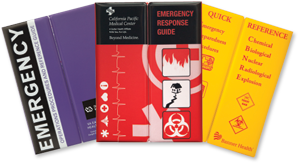Written by: Guy Grace and Michael Garcia
When it comes to our School Safety and Security Guidelines, we organize and define topics in layers. Among them is the parking lot perimeter layer, which in many cases, is where schools experience the most safety issues.
For example, according to the National Safety Council, an average of 50,000 crashes occur in parking lots and garages each year, causing more than 60,000 injuries and 500 deaths. Including an analysis of this data, the National Highway Traffic Safety Administration estimated that over 200 American children are killed annually, and another 5,000 are seriously injured by motor vehicles in non-traffic locations.
Parking lots are particularly risky for school-aged young people when you consider an increase in younger drivers with less experience. In addition, other safety concerns such as falls, theft, vandalism, and assault also can take place in these areas.
Here are four easy-to-implement low-cost strategies to help make your school parking lot safer.
1. Analyze the Risk in Your School’s Parking Lot
Like any organization that invites people onto its property, schools must provide a reasonable level of security to mitigate risks. A parking lot is a highly complex space, and the risks must be evaluated due to the danger to students, teachers, and staff. An ongoing process should be established for identifying, evaluating, and prioritizing risks and areas of weakness within the parking lot layer that could adversely affect individual schools and school districts. This can be done by conducting a walk-through of school grounds and facilities and looking at existing crime and school incidence data.
The goal should be to design a system of accountability with measurable activities and timelines to address risks that were found. Self-assessments are appropriate and should be done by various district stakeholders that oversee the exterior areas of the facility.
A well-thought-out parking lot will reduce liability costs to the school district while keeping students, staff, and visitors safe. It’s critical to evaluate the needs of your school parking lot to identify any possible safety issues and pinpoint problematic heavy traffic areas. School officials will often find that when they evaluate parking lot risks, it’s something that must be assessed continually.
It’s also essential to consider the seasons and how they impact parking lot safety. Slips, trips, and falls are typically very costly for school districts. Districts can mitigate those risks by analyzing pedestrian and vehicular traffic to address concerns when seasons change.
School leaders will also need to consider before and after school activities, special events, and other problems that may alter the safety and security of the facility. For example, suppose you are at a high school or school facility with teen drivers. It’s crucial to analyze their driving habits, such as during lunchtime and off periods.
2. Create Grounds and Facilities Use Policies for Outside Groups
Creating policies for outside groups not only protects schools but also promotes the facilities as assets to the community in many ways. While buildings and grounds are maintained primarily in relation to the education of students, most school boards recognize that district facilities are a valuable community resource and believe they should be available to the community for beneficial uses that won’t interfere with educational activities or disrupt district operations such as renovations, maintenance and/or sanctioned after-school activities.
3. Organize Security Training for Staff and Volunteers
It’s critical for a school district to empower staff and the community with security awareness in and around campus, including in the parking lot perimeter. Early detection of a security threat generally relies on such measures as behavior-based surveillance (e.g., whether a person is acting oddly, dressed oddly, or out of place). This can be accomplished by students, staff, volunteers, and parents and requires that the school community embrace the “see something, say something” mentality through an official program or other means. It also requires that people are generally aware of their surroundings. This concept can be applied to the parking lot layer, especially where staff, students, and parents often begin and end their school days.
Staff, volunteers, and parents should also receive training on the proper flow and control of traffic in parking lots during drop-off and pick-up times to help reduce the risk of vehicle–pedestrian accidents. While there is little to no cost associated with these Tier 1 measures, they can be some of the most critical steps a school district can take to improve safety and security.
4. Assign Staff to Monitor Your School’s Parking Lot
Staff such as administrators, teachers, and custodians assigned to check the parking lot periodically should be equipped with radios that allow communications back to the office. They should also be empowered to initiate an emergency protocol for the school if they detect a threat outside of the building. In addition, they should be equipped with crisis de-escalation training to help manage the public.
Many districts also assign trained staff members to provide constant patrols. These staff members should be on duty to patrol the exterior of a school, including the parking lot perimeter, during regular operating hours to ensure that safety rules and other practices are followed. They should also check for unauthorized vehicles in the parking lot. The most significant benefit to having a person or persons dedicated to this task is that they can focus solely on possible exterior threats to the facility.
An assigned staff member should be fully trained as a security officer and equipped with radio communications. They should also have a tablet or other portable device that provides access to data such as parking pass registrations and student information as needed. Furthermore, the device should also provide access to camera feeds and security system information. Assigned staff could have a communications device to initiate a school lockdown from the outside if a threat is detected.
Something else to consider, monitoring the parking lot during peak times (such as parent drop-off and pick-up) is made easier with a drone that has a badge painted on it. Plus, it delivers real-time threat visualization and situational awareness across the perimeter.
Additional Safety Recommendations
Once the four strategies above are implemented, there are three more recommendations school leaders can do to increase the effectiveness of their parking lot safety plan.
- Create Parking Credentials: Provide parking decals, stickers, or numbered hang tags to staff and regular volunteers. Parking credentials should be prominently displayed on their vehicles. However, they should not display any information that would identify employees or their positions.
- Apply Crime Prevention Through Environmental Design (CPTED) Principles to Enhance Natural Surveillance: Establish clear sight lines from perimeter windows to the parking lot by removing or trimming vegetation.
- Annual Assessment for Lighting: Complete an annual safety and security assessment of lighting based on industry and local standards.
- Use Drones for Surveillance: The use of both tethered and standard drones as part of a video management system can allow cameras to be placed almost anywhere. These drones can quickly fly over to detect threats, and provide aerial images and real-time footage at any time, primarily during peak parking lot traffic hours and after-hours during high-profile school board meetings or other busy special events.
This blog was originally posted on passk12.org.
PASS thanks PASS Advisory Council members Guy Grace and Michael Garcia for their contributions to this article.
If you appreciated this article and want to receive more valuable industry content like this, click here to sign up for our FREE digital newsletters!







